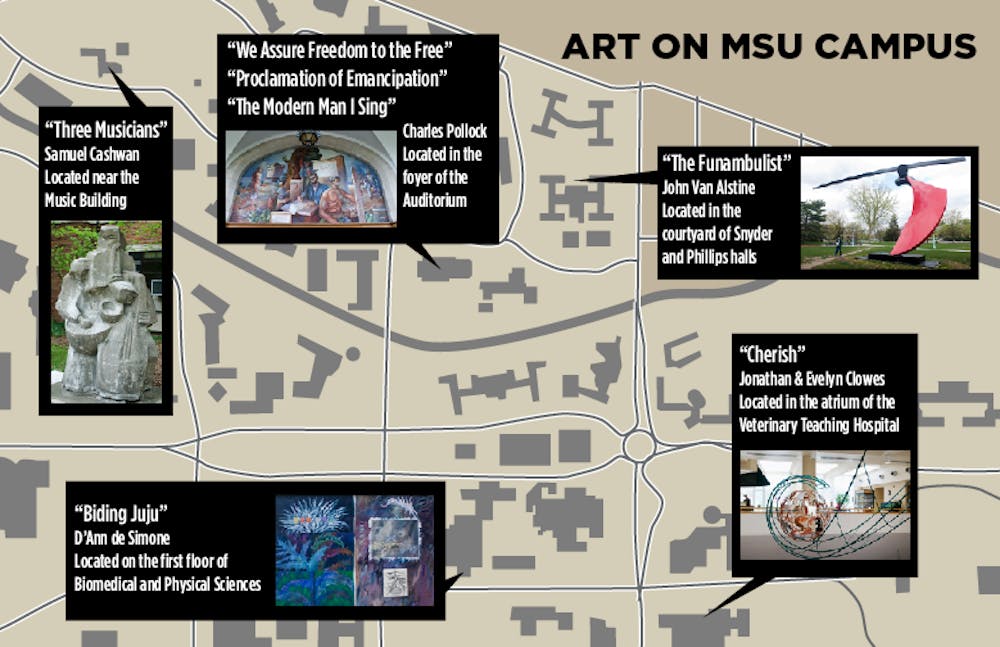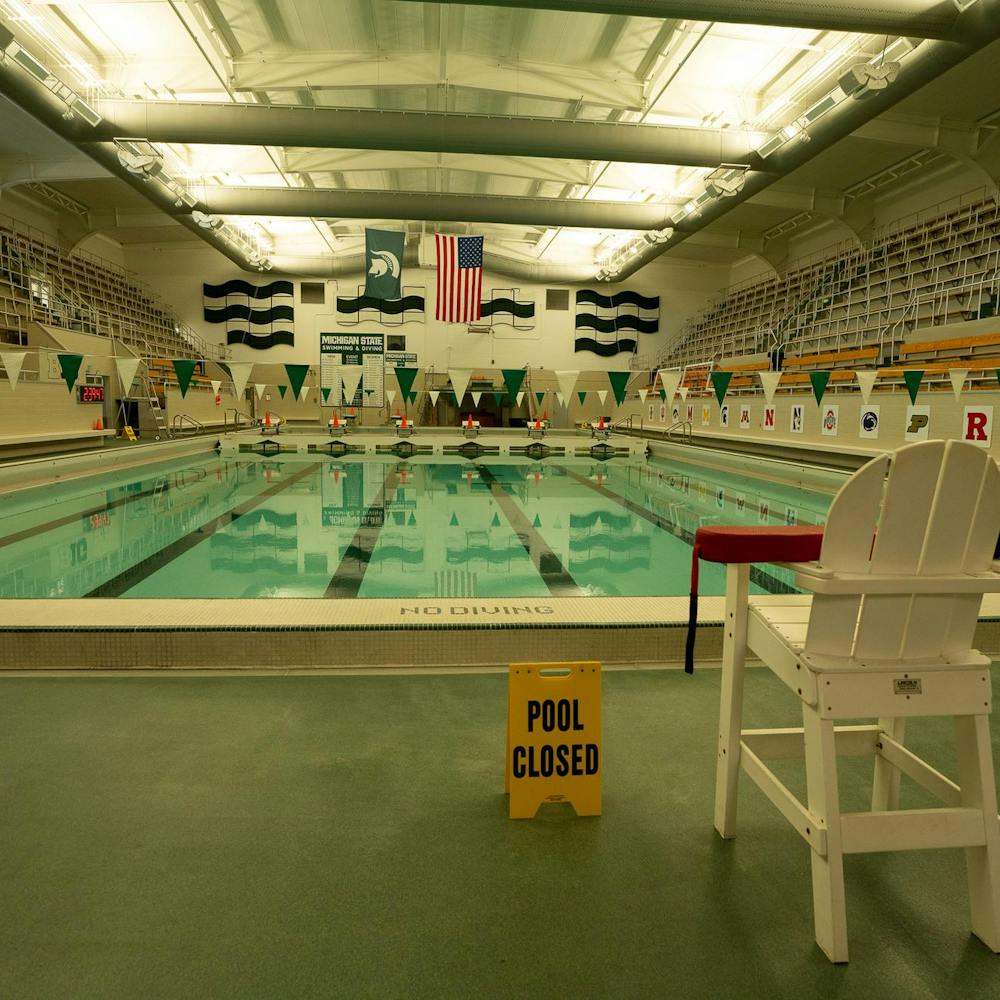When it comes to her daily walk through campus, studio art and music performance senior Maria Navedo looks to art around campus to break up the monotony.
“Too often, we start to look at the buildings, and we just start to get bored,” she said. “The art is just a nice break from all of the plain buildings.”
Despite the visual break provided by such paintings and sculptures, many students who enjoy glancing at the works do not know the history behind them. Unbeknownst to many, a majority of the art of campus came as the result of two large projects, said art history professor Susan Bandes.
The first was put into place by the Works Project Administration, or WPA, in 1935. The WPA was responsible for creating jobs during the era of the Great Depression, many of which were made through commissioning art projects across the U.S., including at MSU.
One such project is the three mural panels in the foyer of the Auditorium, which were painted by Charles Pollock, a well-known artist at the time. The paintings, named “We Assure Freedom to the Free,” “Proclamation of Emancipation” and “The Modern Man I Sing,” were meant to emphasize the struggle for freedom that many U.S. citizens felt.
Bandes, who specializes in teaching about art from the WPA era, said the Pollock paintings are her favorite pieces from the time.
“They’re much more complicated than any of the other projects,” she said. “They address some of the historical concerns, and they definitely reflect the era in which they were produced.”
Another piece from the WPA era is “Three Musicians,” a concrete sculpture outside of the Music Building made by Samuel Cashwan in 1940, Bandes said. The sculpture depicts three individuals, each with different instruments, being morphed together to form one work.
Navedo, who often has class in the Music Building, said the sculpture is one of the most unique pieces on campus.
“Their bodies all melt together as one entity, and I find that really beautiful,” she said.
The other, more modern set of art projects was the result of a contract negotiated by the MSU Board of Trustees and the MSU Planning and Administration Committee in 1999 to set aside money within campus building projects to commission pieces from various artists.
“The goal was to give students a look at various kinds of art and the chance to learn about them,” said Jeff Kacos, the director of the latter committee. “The contract came from the feeling that there was a sense of creativity and diversity missing on campus.”
A recent addition from the contract, according to Kacos, is “The Funambulist,” a 25-foot-tall red and black sculpture by contemporary artist John Van Alstinein, which was added to the courtyard of Snyder and Phillips halls in the summer of 2010. Kacos said the work was meant to provide a modern contrast to the traditional look of the residence hall.
In the end, Bandes said students who take the time to discover more about the art on campus will not regret it.
“They can learn so much by just taking a walk around campus and taking a closer look at the stories behind the art they walk by every day,” she said.
Support student media!
Please consider donating to The State News and help fund the future of journalism.
Discussion
Share and discuss “Artwork on campus has rich history” on social media.







